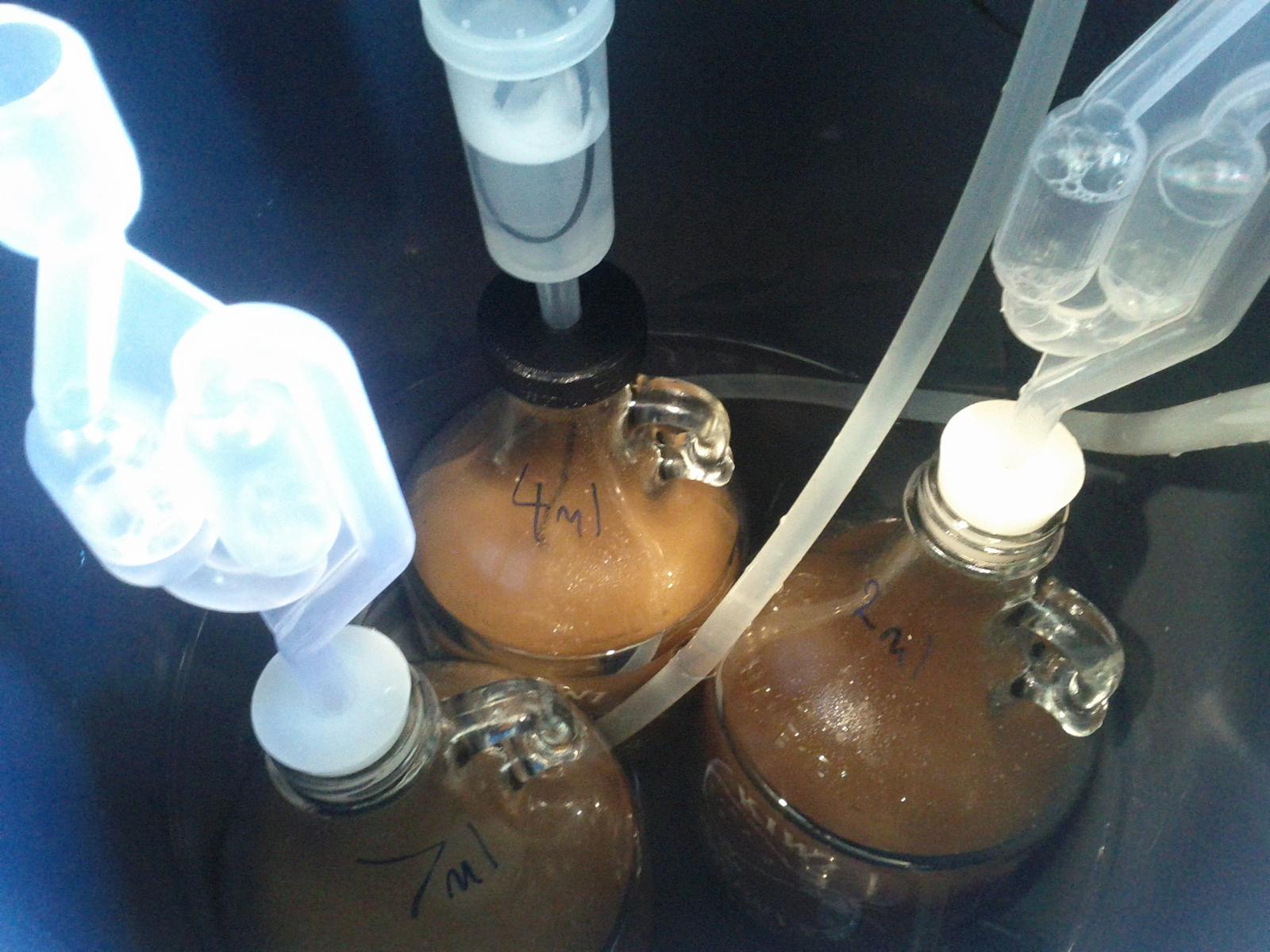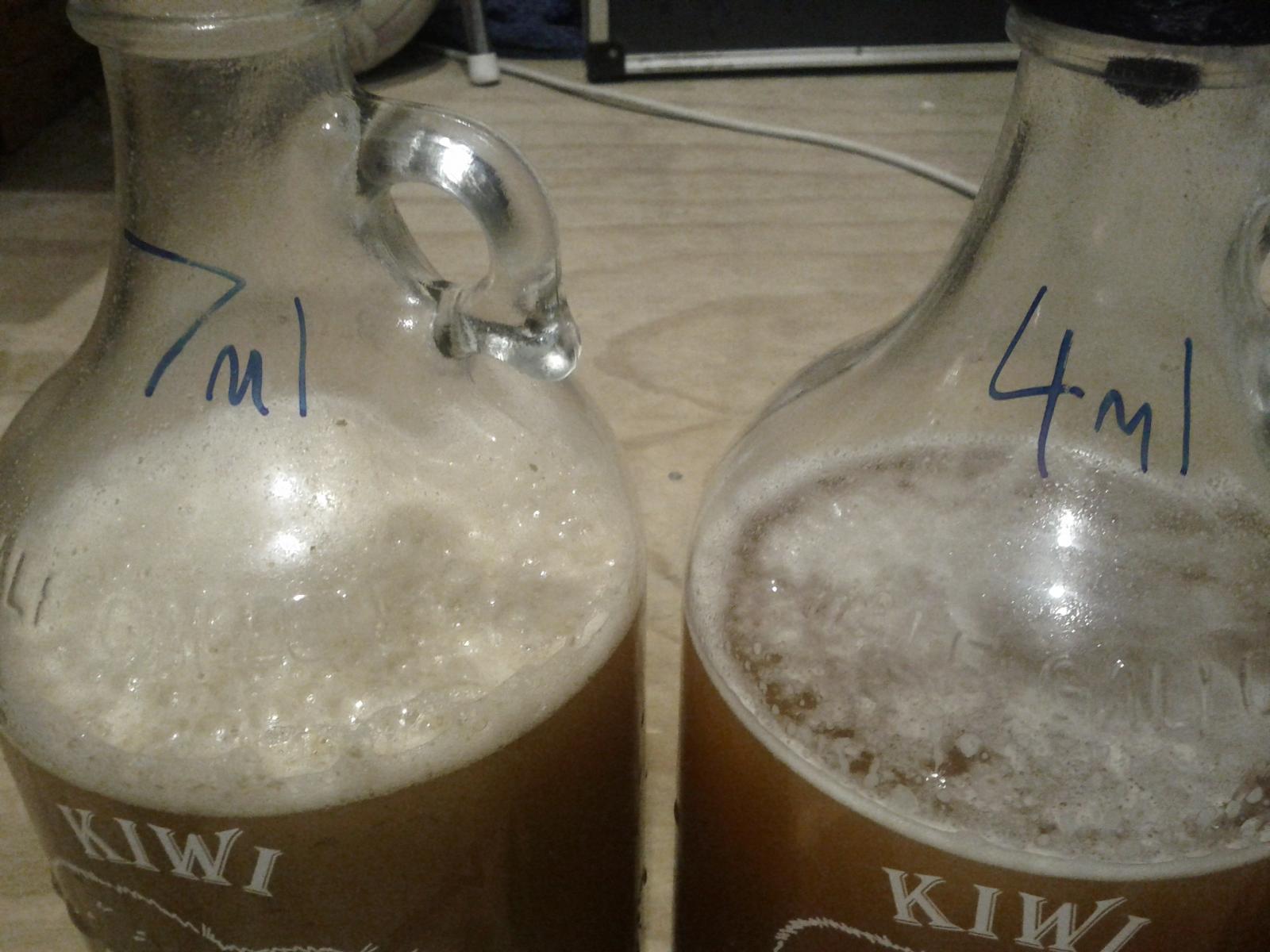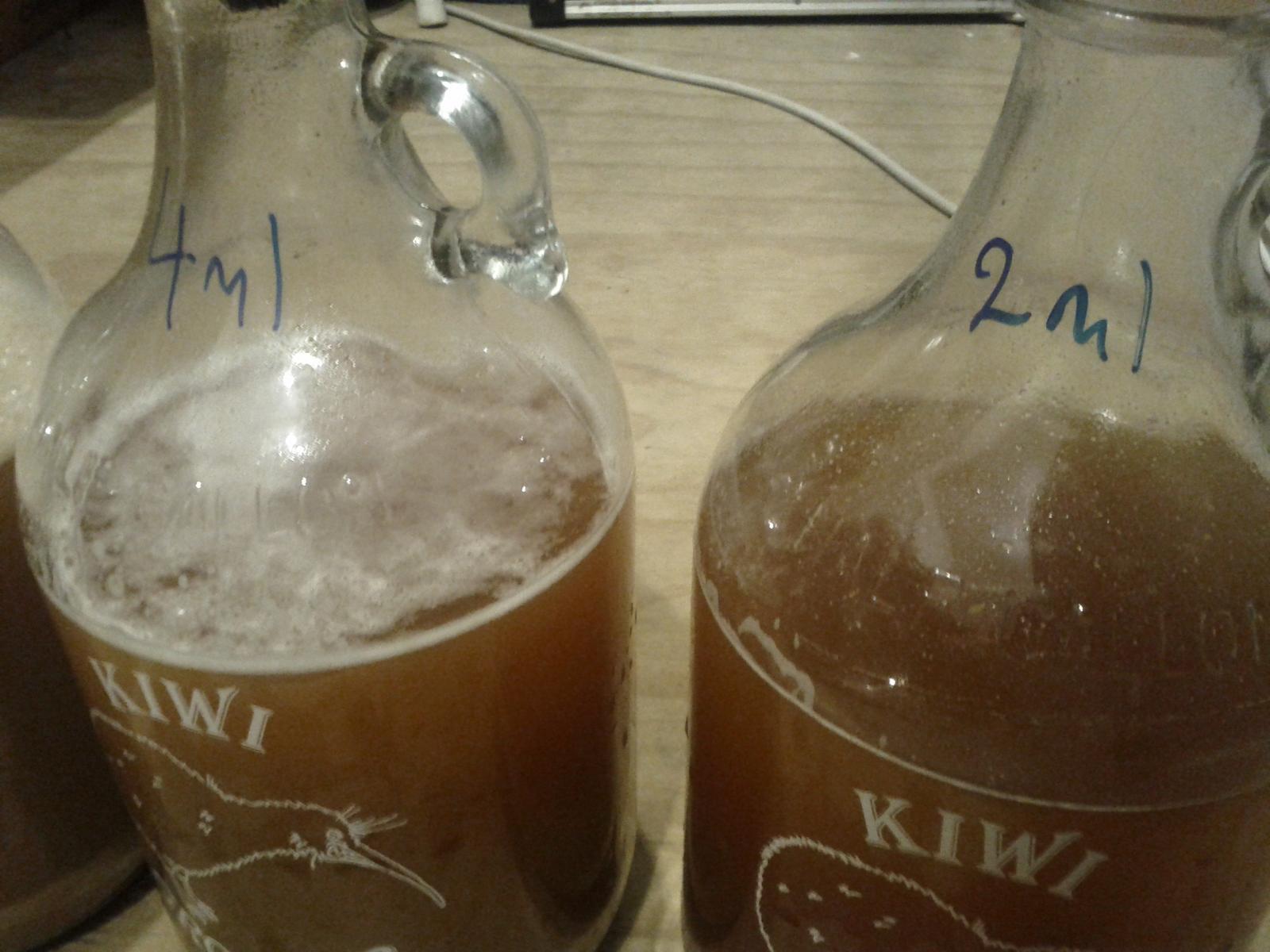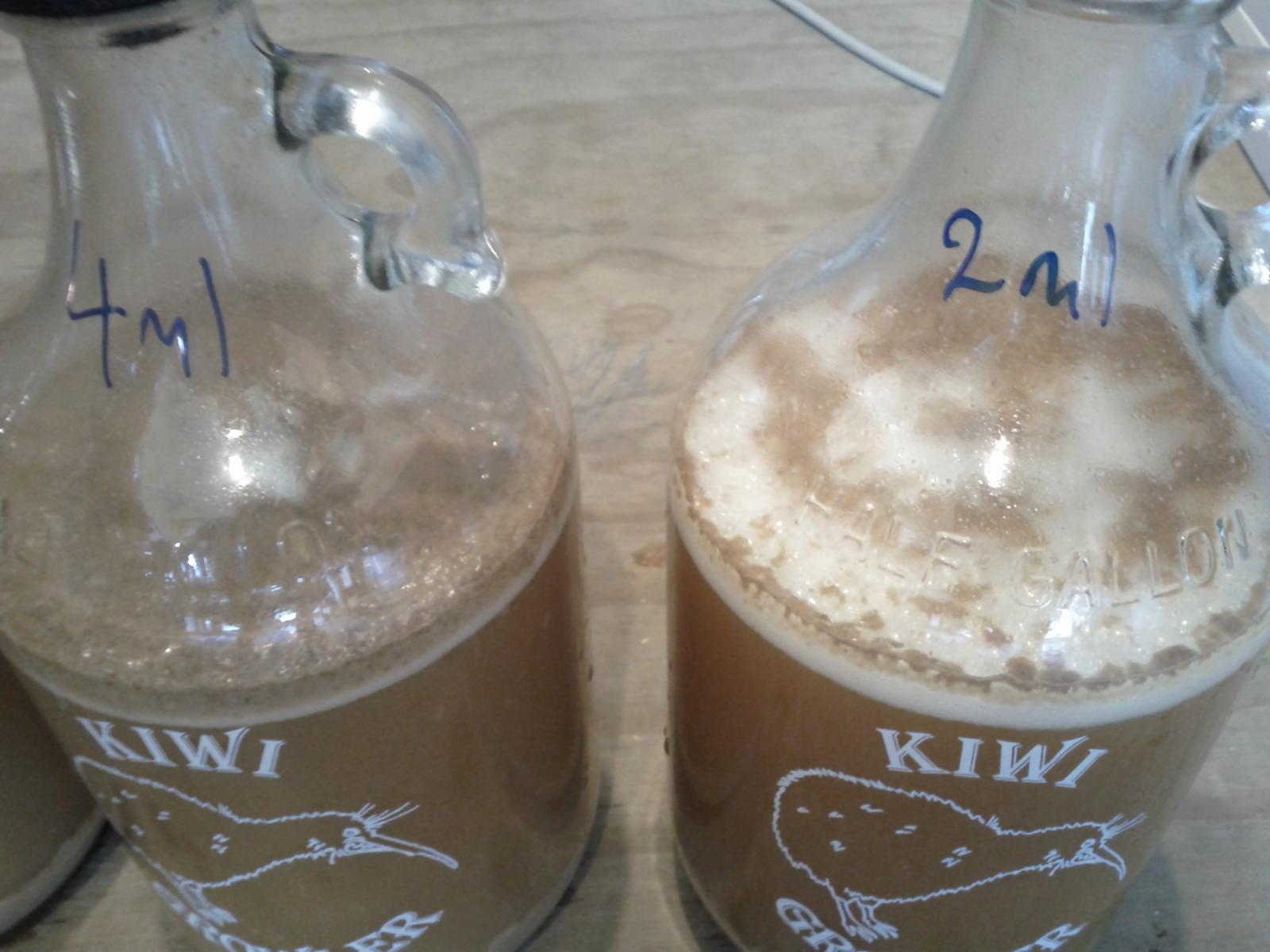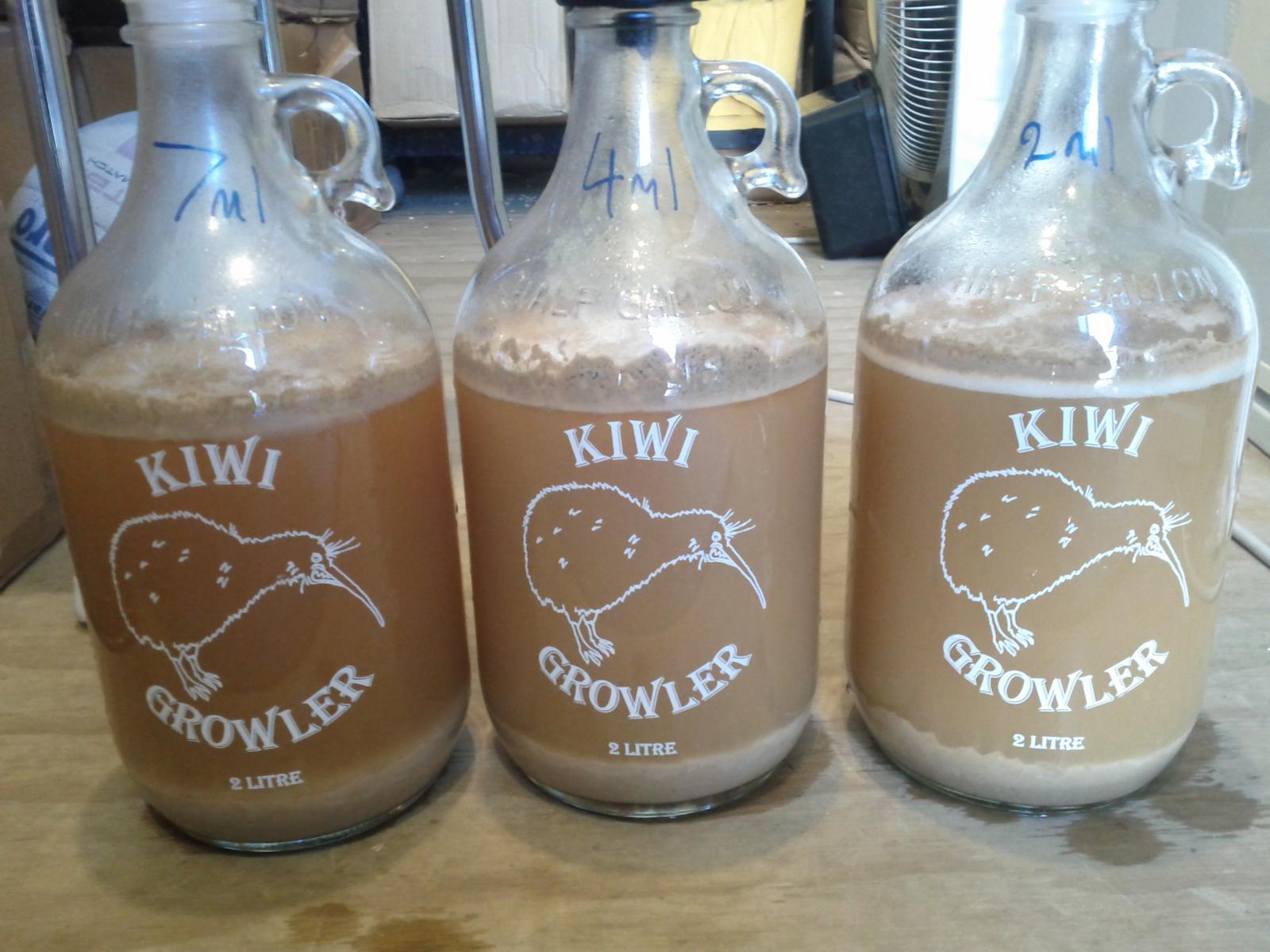I haven't had much success with hefeweizens so far, with the last one being almost undrinkable. I'm determined to get this style right.
Since I brew 1 gallon batches and use 3x 1/2 gallon growlers to ferment in, this is a good opportunity to do some 3 way testing.
Today I'm testing hefeweizen pitch rates - the general vibe is that you should underpitch "a bit", maybe by 25%, but that's hard to measure when pitching from slurry and you don't really know how many cells you have. Basically if you guess wrong on the yeast density calculator, your pitch rate will be way out. Others say to "abuse the yeast" for best results.
My yeast was bought new couple of months ago, I overbuilt a starter and put the extra in the fridge. This is that extra slurry, rebuilt into a fresh starter over 4 days in 2 stages, then left to settle in the fridge for 2 days then decanted. What is left is reasonably thick, freshly built yeast with little non-yeast matter in there. This is the baseline I'm working from and will be what I use next time I make a hefe.
MrMalty and Beersmith say I need 42 billion cells for the whole batch, I have assumed 2.5b cells per ml on the basis that it's pretty good quality yeast and somewhat thick.
I pitched this amount:
- 7ml (approx what Beersmith and MrMalty recommend for an ale of this gravity).
- 4ml (bit of an underpitch)
- 2ml (big underpitch, should still be an underpitch even if I guessed wrong on the cell density)
Basic details:
- OG 1.050, 4.5 litres split 3 ways.
- Yeast is Wyeast 3638 - (HBS didn't have 3068, this is what I got, if it sucks again the next split test will be yeast).
- Fermenting at 68f / 20c. I want a good hit of banana and fermenting at 62f hasn't worked for me so far. Fermenting in temp-controlled swamp cooler with the probe in the medium-pitched growler.
- I didn't aerate - other than a light swirl to mix in the yeast and whatever aeration happened when transferring.
- Recipe is a little non-standard - 50% wheat, 35% Pils, 10% Vienna, 5% caramunich. I wanted a bit of darker stuff because the last hefes were insipid pale looking things, I want something that looks more like an IPA. Also wanting to lower the pH a bit with the darker grains, so I can avoid acid malt.
- Water profile is soft, slightly adjusted to get calcuim to 50ppm, adjusted sparge pH to 6 with lactic acid. Mash pH was measured at 5.7 after 20 mins using a cheap meter. It most likely was slightly lower than that. The last hefe was almost dumped due to too much acid, so I erred on the side of caution here. 1% acid malt would have got me closer for next time.
I'll update this thread once fermentation starts, and get some pics when there's something to see.
Since I brew 1 gallon batches and use 3x 1/2 gallon growlers to ferment in, this is a good opportunity to do some 3 way testing.
Today I'm testing hefeweizen pitch rates - the general vibe is that you should underpitch "a bit", maybe by 25%, but that's hard to measure when pitching from slurry and you don't really know how many cells you have. Basically if you guess wrong on the yeast density calculator, your pitch rate will be way out. Others say to "abuse the yeast" for best results.
My yeast was bought new couple of months ago, I overbuilt a starter and put the extra in the fridge. This is that extra slurry, rebuilt into a fresh starter over 4 days in 2 stages, then left to settle in the fridge for 2 days then decanted. What is left is reasonably thick, freshly built yeast with little non-yeast matter in there. This is the baseline I'm working from and will be what I use next time I make a hefe.
MrMalty and Beersmith say I need 42 billion cells for the whole batch, I have assumed 2.5b cells per ml on the basis that it's pretty good quality yeast and somewhat thick.
I pitched this amount:
- 7ml (approx what Beersmith and MrMalty recommend for an ale of this gravity).
- 4ml (bit of an underpitch)
- 2ml (big underpitch, should still be an underpitch even if I guessed wrong on the cell density)
Basic details:
- OG 1.050, 4.5 litres split 3 ways.
- Yeast is Wyeast 3638 - (HBS didn't have 3068, this is what I got, if it sucks again the next split test will be yeast).
- Fermenting at 68f / 20c. I want a good hit of banana and fermenting at 62f hasn't worked for me so far. Fermenting in temp-controlled swamp cooler with the probe in the medium-pitched growler.
- I didn't aerate - other than a light swirl to mix in the yeast and whatever aeration happened when transferring.
- Recipe is a little non-standard - 50% wheat, 35% Pils, 10% Vienna, 5% caramunich. I wanted a bit of darker stuff because the last hefes were insipid pale looking things, I want something that looks more like an IPA. Also wanting to lower the pH a bit with the darker grains, so I can avoid acid malt.
- Water profile is soft, slightly adjusted to get calcuim to 50ppm, adjusted sparge pH to 6 with lactic acid. Mash pH was measured at 5.7 after 20 mins using a cheap meter. It most likely was slightly lower than that. The last hefe was almost dumped due to too much acid, so I erred on the side of caution here. 1% acid malt would have got me closer for next time.
I'll update this thread once fermentation starts, and get some pics when there's something to see.


